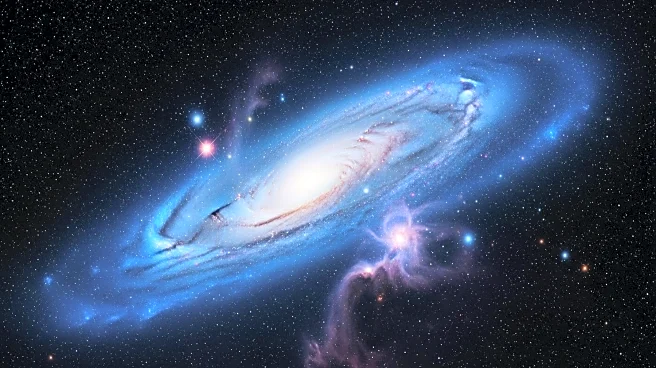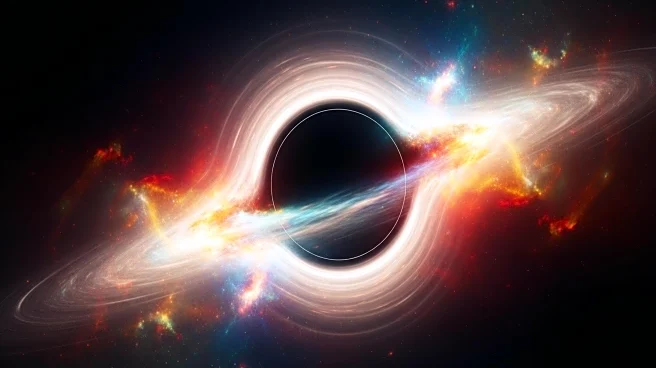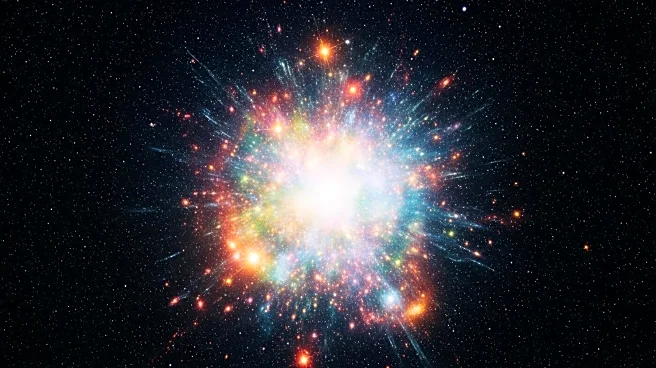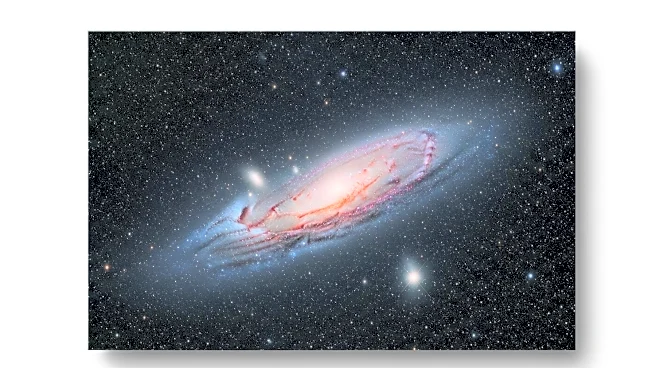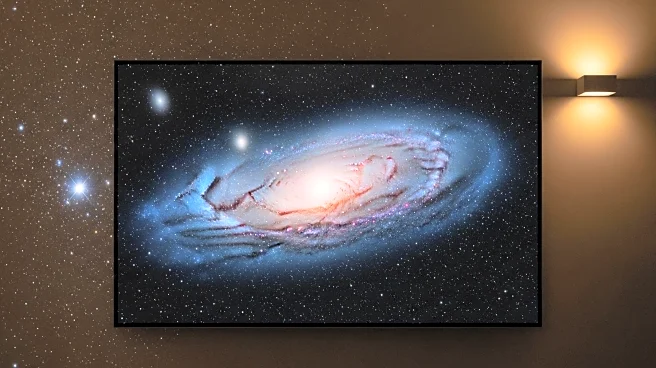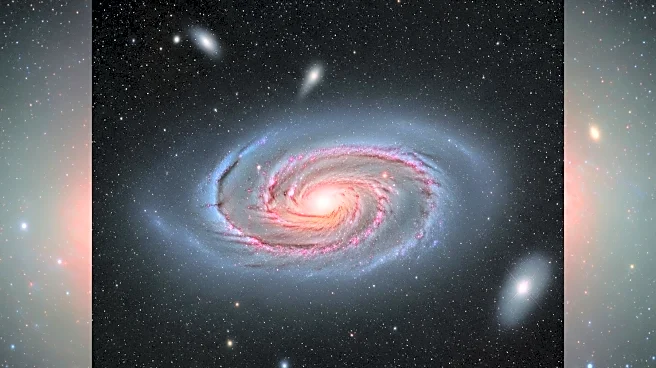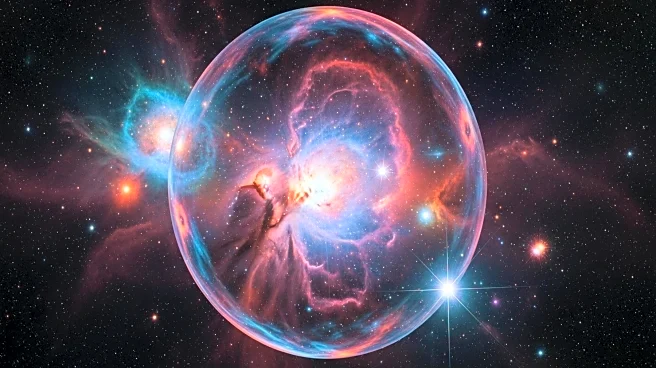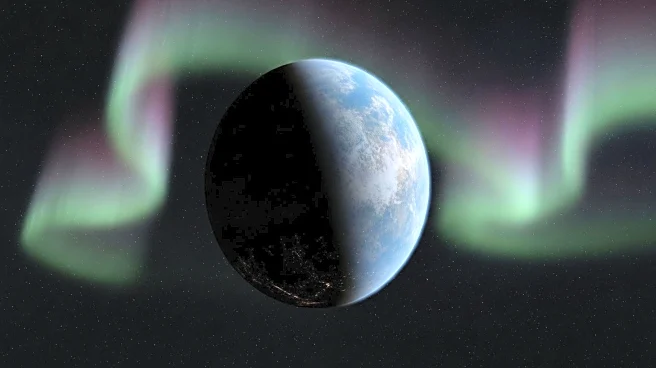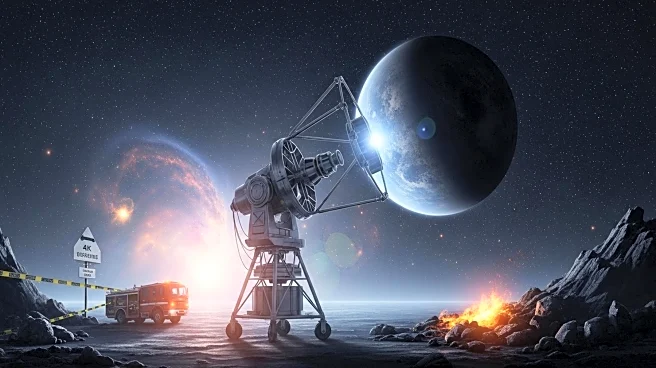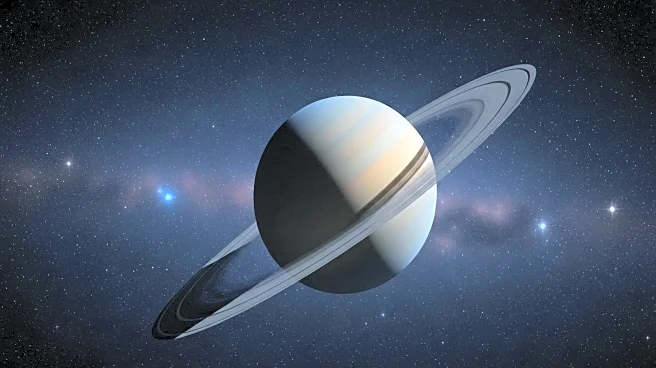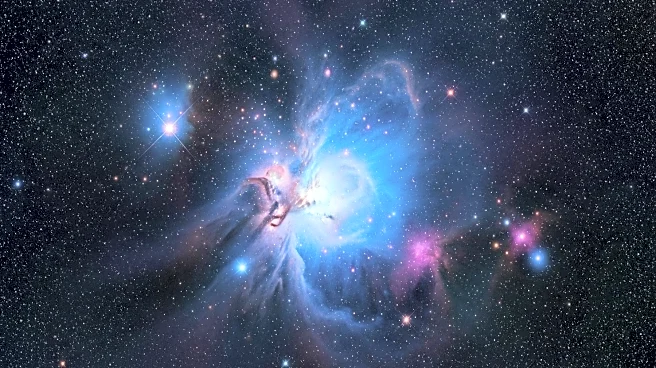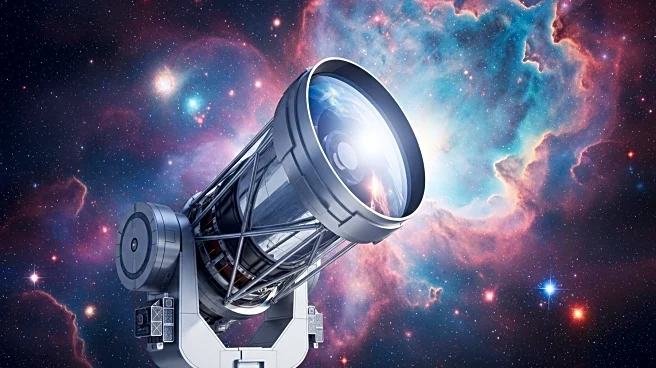What is the story about?
What's Happening?
Recent studies have challenged the long-held belief that the Andromeda Galaxy will inevitably collide and merge with the Milky Way in approximately 4 billion years. Research conducted by Til Sawala from the University of Helsinki indicates that the probability of such a collision has shifted from near-certainty to a coin flip. This revelation comes amidst the backdrop of stunning astrophotography captured by Ronald Brecher, showcasing the Andromeda Galaxy's intricate spiral arms and dense dust lanes. Brecher's image, taken over 38 hours from his home in Guelph, Canada, highlights the galaxy's supermassive black hole and nearby satellite galaxies, offering a detailed view of this celestial neighbor located 2.5 million light-years from Earth.
Why It's Important?
The potential collision between the Andromeda Galaxy and the Milky Way has been a significant topic in astrophysics, with implications for the future of our galaxy. The revised probability of this event alters the understanding of galactic dynamics and the long-term fate of the Milky Way. This uncertainty may influence future research directions in astronomy, focusing on the gravitational interactions and evolutionary paths of galaxies. Additionally, the astrophotography of Andromeda provides valuable insights into the structure and composition of galaxies, aiding scientists in studying star formation and galactic centers.
What's Next?
As the probability of a collision between the Andromeda Galaxy and the Milky Way remains uncertain, astronomers may prioritize further observational studies and simulations to refine predictions. These efforts could involve advanced telescopic technologies and international collaborations to monitor galactic movements and interactions. The scientific community may also explore alternative scenarios for the future of the Milky Way, considering the implications of a non-collision outcome. Public interest in space exploration and astrophotography may continue to grow, driven by the captivating images and evolving narratives of our cosmic neighborhood.
Beyond the Headlines
The reevaluation of the Andromeda-Milky Way collision highlights the dynamic nature of scientific understanding, where new data can significantly alter established theories. This development underscores the importance of continuous research and technological advancements in astronomy. The cultural fascination with space and the universe may be further fueled by such discoveries, inspiring educational initiatives and public engagement with science. Ethical considerations regarding the allocation of resources for space research versus other societal needs may also arise, prompting discussions on the balance between scientific exploration and addressing terrestrial challenges.
AI Generated Content
Do you find this article useful?


